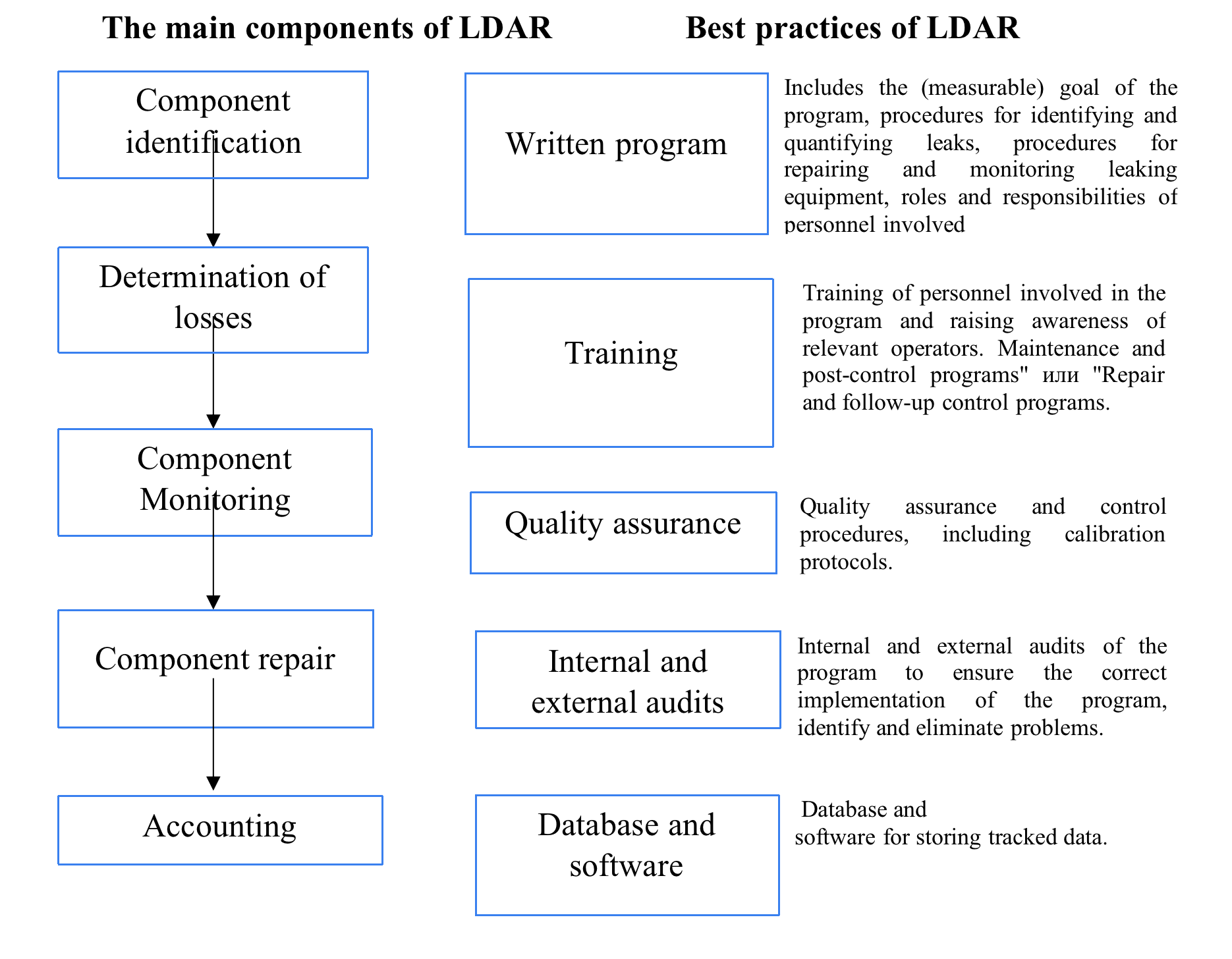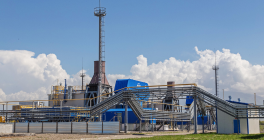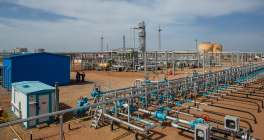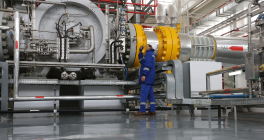Decarbonization

The forecast of global demand for primary energy resources until 2050 provides for a steady expansion of the use of lower-carbon energy sources in most major economies in the 2030s and 2040s. The consumption of fossil fuels will continue to decline steadily, while the penetration of renewable energy into the market will continue to grow steadily.
Natural gas will play an important role in the transition to a low-carbon future in key markets of developed and developing countries, both through its use as a reserve fuel for renewable energy capacities in the electricity markets or to increase the production of "blue" hydrogen with low emissions, and through further use in industries whose decarbonization is problematic (such as heavy industry). In many ways, gas will continue to serve as a kind of "bridge" on the transition path.
Natural gas is the foundation for the emerging hydrogen energy sector. Experts have confirmed that the most promising and economically justified method is to produce hydrogen from natural gas
Strategy for achieving carbon neutrality of the Republic of Kazakhstan until 2060.
In setting goals for decarbonization, QazaqGaz was based on goals at the country level according to the Strategy for Achieving Carbon Neutrality of the Republic of Kazakhstan until 2060.
According to the IPCC assessment of 2021, climate change will intensify in all regions in the coming decades, and in the absence of action on immediate and large-scale reduction of GHG emissions, limiting warming by 2 °C will be unattainable. In this regard, for the implementation of the Paris Agreement, all parties submit their climate action plans — nationally determined contributions (ONUV) every five years.
On August 2, 2016, Kazakhstan signed the Paris Agreement and ratified it on December 6, 2016 before the official signing of the Paris Agreement in September 2015. Kazakhstan has demonstrated its commitment to its goal by presenting its ONUV within the framework of the UN Framework Convention on Climate Change, which assumes the achievement of the following goals:
unconditional reduction of GHG emissions by 15% by December 2030 compared to 1990;
conditional reduction of GHG emissions by 25% by December 2030 compared to 1990, subject to additional international investments, access to a low-carbon technology transfer mechanism, Green Climate Fund and a flexible mechanism for transition economies.
In December 2020, at the Summit on Ambitious Challenges related to Climate Change (organized by the United Nations, Great Britain, France in partnership with Chile and Italy) President of the Republic of Kazakhstan Tokayev K.K. announced a new goal for Kazakhstan to achieve carbon neutrality by 2060, confirming Kazakhstan's obligations under the Paris Agreement.
On February 2, 2023, the Strategy for Achieving Carbon Neutrality of the Republic of Kazakhstan until 2060 was approved, according to which targets for GHG emissions until 2060 were approved (0 tons of GHG emissions with -45 net GHG absorption from LULUCF).
The implementation of the Strategy for Achieving Carbon Neutrality of the Republic of Kazakhstan is based on the following principles:
purposefulness, unity and integrity: all planned initiatives are aimed at achieving the goal and are coordinated with each other;
feasibility study: assumes a technologically feasible, but least costly way of low-carbon development and achieving carbon neutrality;
Transition fairness: creating new opportunities in regions affected by decarbonization policies with targeted support from the population;
circular economy: an economy based on the use of secondary resources and reduction of consumption;
phased approach: implementation of strategic initiatives through short- and medium-term plans with continuous analysis of previous stages and the entire strategic cycle;
openness and interaction with society: broad involvement of all stakeholders at all levels of monitoring and decision-making, including representatives of central and local authorities, quasi-public sector, science, business (associations and enterprises), non-governmental organizations and local communities;
rationality (balance): maintaining a balance between achieving the goal and ensuring security (economic, energy, social) and stability.
The concept of low-carbon development of Samruk-Kazyna JSC
In setting goals for decarbonization of QazaqGaz was also based on goals at the level of the Samruk-Kazyna Fund according to the Concept of Low-carbon Development of Samruk-Kazyna JSC.
According to this Concept, the Samruk-Kazyna Foundation sets a strategic goal to reduce emissions by 10% by 2032 compared to 2021 and aims to achieve carbon neutrality by 2060 according to the "Deep Decarbonization" scenario.
At the same time, the main risk is that the level of emissions will grow along with the growth of portfolio companies (KMG, Samruk Energy, KTZ), thus reducing greenhouse gas (GHG) emissions by 10% will be quite an ambitious goal.
Currently, the GHG emissions from portfolio companies account for 13.3% of the country's total emissions based on 2021 data. QazaqGaz's share in direct CO2 emissions within the Fund's group was 5.35% in 2021, and in indirect emissions, it was 0.7%. The share of QazaqGaz's GHG emissions in 2021 was approximately 2% of Kazakhstan's CO2.
The concept of low-carbon development of Samruk-Kazyna implies three possible decarbonization scenarios. Each of the scenarios assumes a reduction of the carbon footprint by reducing emissions by Coverage 1 and indirect emissions by increasing the share of RES.
The main directions of decarbonization of QazaqGaz
According to the decarbonization goals at the level of Kazakhstan, as well as at the level of the Samruk-Kazyna Fund, QazaqGaz also aims to reduce its carbon footprint by 10-12% by 2032 and will strive for carbon neutrality by 2060.
Currently, QazaqGaz is conducting an inventory of GHG emissions according to the IPCC country methodology of 2006. The main part of QazaqGaz emissions are CO2 emissions from gas combustion at compressor stations (2372 thousand tons of CO2 equivalent), as well as volatile emissions from gas transportation through trunk and distribution networks (2973). Indirect emissions amount to 76 thousand tons of CO2 equivalent.
When comparing the structure of GHG emissions of QazaqGaz with foreign gas operators, it was discovered that methane emissions (in particular, volatile emissions) of QazaqGaz account for a significant part of emissions compared to other companies (55% vs. 5%-24%).
Methane emissions in the emission structure of QazaqGaz significantly exceed the figures of other companies due to the application of a higher coefficient for developing countries according to the IPCC methodology. QazaqGaz has the potential to reduce. This methodology implies coefficients 2 times higher for developing countries than for developed countries, and depends on the total volume of gas transportation by the company. At the same time, it should be taken into account that the IPCC's new methodology for accounting for volatile emissions will calculate emissions based on the length of the pipeline.
In addition to conducting GHG inventories based on the national IPCC methodology, it is recommended to maintain an internal record of GHG emissions with a more detailed methodology at the company level (e.g., pipeline kilometers, the number of pneumatically controlled valves, the number of blowdown valves, etc.).
GHG emissions forecast up to 2032
In light of the achievement of low-carbon development in Kazakhstan, gas will act as a transitional fuel for the transfer of electric generating coal capacities. However, this also means that gas consumption and, accordingly, emissions from gas transportation will increase in the period up to 2032. The average annual increase in gas transportation volume by 0.6% per year could potentially lead to an increase in emissions by 8% by 2032 compared to 2019. Thus, in order to achieve the goal of reducing emissions by -10% by 2032, the overall level of emission reduction will have to be -18% by 2032. compared to 2019
The main objectives
Measures to reduce GHG emissions should include technical as well as organizational measures. At the same time, organizational measures should be applied already at the initial stage, which include, inter alia, the creation of a special organizational structure, training of employees, as well as the introduction of economic incentives to improve energy efficiency (for example, the introduction of decarbonization targets and related efficiencies).
Technical measures to reduce emissions are divided into measures to reduce volatile emissions and emissions from combustion on compressors. It should be noted that the potential introduction of a carbon tax in Kazakhstan will make these initiatives more economically attractive. The overall potential from technical measures in the long term is 23%-59% of total emissions.
Measures to reduce GHG emissions
|
№
|
Measures
|
Fundamental principles
|
Examples
|
|
1.
|
Technical measures
|
Require capital investments;
Involve the modernization or replacement of existing energy-intensive equipment;
Implement state-of-the-art energy-efficient and energy-saving technologies to reduce energy losses;
Should be carried out at the initial stage.
|
Implementation of the LDAR program;
Replacement of dry seals on centrifugal compressors;
Improving efficiency at the GPU;
Use of mobile compressor stations;
Electrification of equipment.
|
|
2.
|
Organizational measures
|
Do not require capital investments;
Should be implemented at the initial stage;
Necessary for creating the organizational structure for managing events.
|
Establishment of an organizational management structure for emissions reduction measures, including the creation of a dedicated department for implementing decarbonization strategies.;
Employee training within the company;
Implementation of economic and organizational incentives for energy conservation and energy efficiency improvement, as well as practical implementation of measures, for example, the introduction of centralized decarbonization targets and related KPIs into the motivation system;
Regulatory and financial support.
|
|
3.
|
Additional measures
|
Some initiatives require capital investments;
They are most relevant when it is impossible to completely reduce GHG emissions, for example, when aiming for carbon neutrality.
More applicable in the long-term horizon
|
Financial instruments for emissions compensation
(including potentially within the Fund)
Offsets (in the form of forest planting)
|
However, in the short term, measures to improve operational efficiency are the most relevant. Such measures have a relatively low cost of reducing GHG emissions (expressed in US dollars per reduced tonne of CO2 emissions-eq.) and have significant potential to reduce emissions. For example, according to the forecasts of the EPA (Environment Protection Agency) in the USA, the introduction of the LDAR program can potentially reduce the amount of volatile emissions by up to 63%, depending on the frequency of inspections.
The main components of LDAR Best practices of LDAR

The advanced experience of LDAR (Leak Detection and Repair) implementation includes detailed development of written programs and procedures, personnel training, quality assurance (including calibration protocols), internal and external audits, as well as database management and software for storing tracked data.
|
The equipment used for detecting emissions
|
Applied equipment for quantitative assessment of emissions
|
Standard quantitative assessment methods
|
|
Optical gas Imaging;
Laser leak detector;
Screening with soap solution;
Organic Vapor Analyzers (OVA) and Toxic Vapor Analyzers (TVA);
Detection of acoustic leaks (for leaks through valves).
|
Calibrated Vent Bag;
High volume sampler;
Turbine counter.
|
Leak sampling and direct measurement of emissions or application of an emission factor;
Emission factors by component (cm3/component equipment) or by throughput;
Hyperspectral/multispectral detectors and the use of the emission factor.
|
Measures such as electrification and transition to renewable energy sources, as well as financial instruments for compensation of emissions are longer-term measures towards achieving the goal of carbon neutrality, due to the higher cost of application and the lack of incentive mechanisms in Kazakhstan at the moment. The feasibility of these measures will depend on the level of state support, as well as on the presence of supportive market mechanisms.
The roadmap for the implementation of measures to reduce QazaqGaz emissions includes the following activities:
Short-term initiatives:
Development of a decarbonization strategy and detailing of those. measures by PTD departments (until 2030)
Implementation of organizational measures (until 2030)
a. Implementation of the LDAR program
b. Operational efficiency
Transition to alternative fuels (2030-2040)
Long-term initiatives:
Gradual electrification of GPA (2030-2040)
Transition to renewable energy sources (starting from 2 EGPA ICA) (2030-2060)
Financial instruments for emissions compensation (2030-2060)
Offsets (2035-2060)
Methane leaks
Methane emissions at the facilities of the gas transmission system are caused by the production technology. During the operation of compressor stations, gas distribution stations and the linear part of the main gas pipelines, natural gas leaks may occur, which reduce operational efficiency, increase energy consumption, and also increase the risk of explosive situations.
JSC "NC "QazaqGaz" on an ongoing basis carries out monitoring, diagnostics, monitoring, collection and processing of information in order to reduce methane emissions into the atmosphere at the Company's facilities. Leak detection surveys are carried out in various ways: aerial survey, automobile survey and walking method.
For example, in the aerial version, the Mi-8 helicopter is used, in the technological hatch of which the optical unit of the remote laser methane detector DLS-PERGAMON-ALMA is installed. The principle of operation of the device is based on diode-laser spectroscopy. In the automotive detection variant, the OMD optical methane detector is mounted on the front of the vehicle, which detects the presence of methane in the air when driving. The action of the device is based on the property of methane to absorb infrared (IR) radiation. The device provides the ability to detect gas leaks up to 1 fraction-per-million (PPM).
A remote laser methane detector is used to clarify the places of leaks at crane nodes or if it is impossible to detect other options.
In the period from 2016 to 2022, incidents and accidental environmental pollution on the main gas pipelines were not recorded
Plans for 2023 and the Medium-Term Perspective
The Company plans to implement the following measures in terms of combating climate change:
risk assessment in accordance with TCFD;
approval of the next efficiency goal – reduction of the carbon footprint by 1.5% for the Group of Companies;
development of a low-carbon development program that will contain decarbonization measures;
conducting scenario risk analysis;
development of a climate strategy;
inventory of greenhouse gas emissions by Coverage 2 and 3;
filling out the CDP questionnaire and getting a rating;
systematization of work on the collection and analysis of data on the results of the inventory of greenhouse gases from subsidiaries of JSC NC "QazaqGaz";
identification of the most significant contributors to the Company's greenhouse gas emissions;
development of climate change policy and greenhouse gas emissions management;
development of a Decarbonization Strategy and Roadmap by 2023;
Implementation of LDAR software to reduce volatile methane emissions.
Expected results
In light of the decarbonization goals at the level of Kazakhstan, as well as at the level of the Samruk-Kazyna Fund, QazaqGaz also plans to reduce its carbon footprint by 10-12% by 2032 and will strive for carbon neutrality by 2060.
According to the Samruk-Kazyna decarbonization concept, QazaqGaz will also reduce the carbon footprint according to three scenarios: "Business as usual", "Decarbonization" and "Deep Decarbonization".
"Business as Usual" Scenario: Assumes an 8% increase in greenhouse gas emissions by 2032, reflecting the Company's growth in activity if no additional emissions reduction measures are implemented.
"Decarbonization" scenario. Assumes the level of GHG emissions in 2032 equal to the level of 2021 due to the application of technical measures: extensive application of the LDAR program on pipelines and compressor stations, repair of gas turbine units according to the energy efficiency initiatives of QazaqGaz, the use of mobile compressor stations (ISS) during repairs, as well as replacement/purchase of additional equipment (replacement of valves with pneumatic drive, optimization of linear heaters, installation of sensors, installation of waste heat boilers, etc.). It is also expected to reduce emissions by Coverage 2 by 33% due to the purchase of electricity from renewable energy sources, including the transfer of two EGPs to renewable energy sources.
The "Deep decarbonization" scenario, which corresponds to the concept of preventing global temperature growth by more than 1.5 degrees Celsius. It assumes a reduction of GHG emissions by 10-12% from the level of 2021 due to technical measures described in the "Decarbonization" scenario. It also includes the repair of compressors (including the replacement of wet seals with dry ones on ICA compressors), as well as the gradual transition to biomethane on pilot projects.
Low carbon development concept
Low carbon development program for 2025-2033








